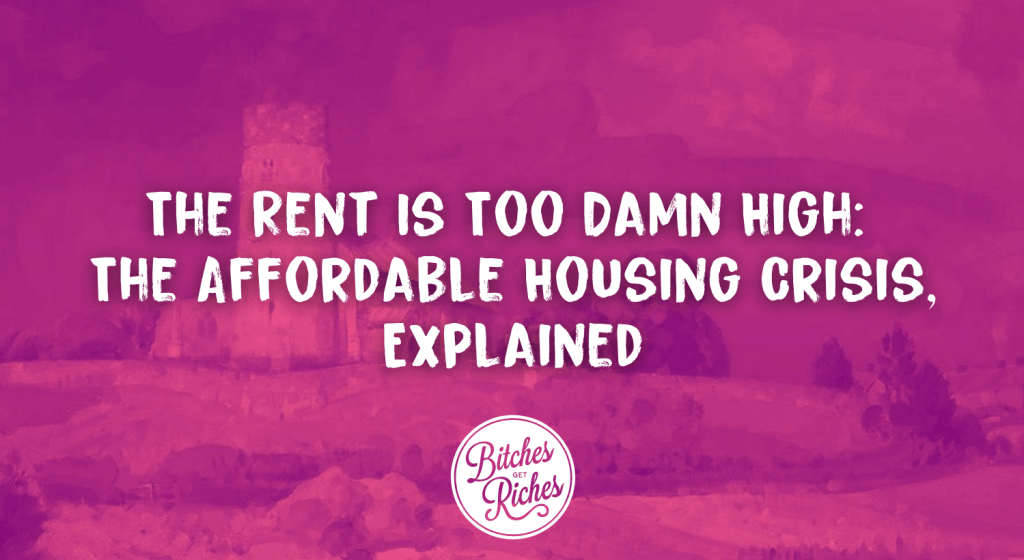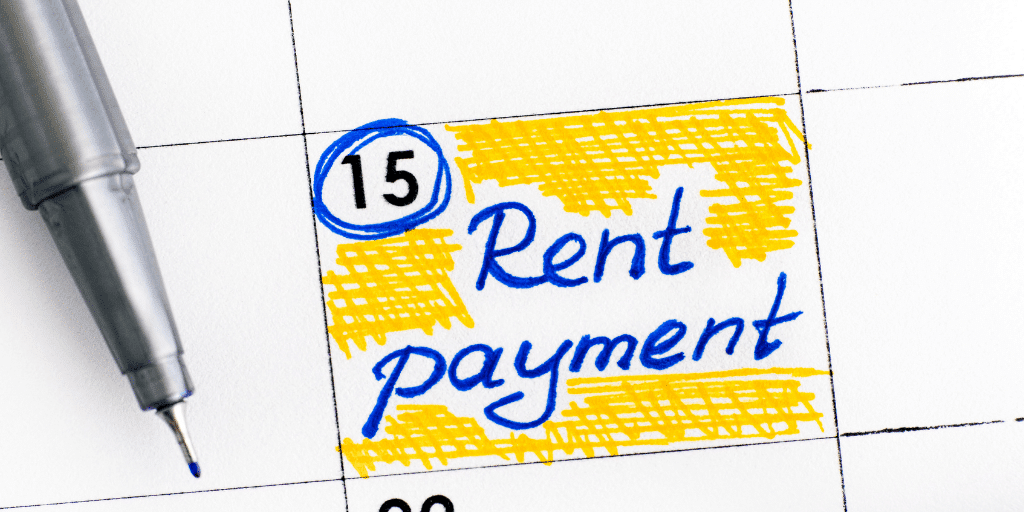The on-going political stances about whether or not minimum wage should be raised or about student loans all make me very upset and I don’t like it..
I’m very even-tempered person, but apparently personal finances and cost of living are my hot-button topics.
But don’t worry, I’d still like to counter with logic and facts.
Okay, and maybe a tiny bit of sass.
My main argument is that the general ‘we’ are not paid enough. And here’s my proof:
According to the U.S. Department of Housing and Urban Development’s (HUD’s) Office of Policy Development and Research (PD&R), 30% of income is the standard indicator of affordability for housing in the United States.
That means on a $30,000 full-time salary (which is still above minimum wage and not bad for my location), I can afford about $700 on monthly rent.
The starting price for a one-bedroom apartment in my town is $1,028. That’s a whole extra $300 that I don’t have.
If your first reaction is to tell me to get a roommate – I have one. Because I need to. Because I can’t afford not to.
Personally, I think having a roommate should be a way to save money – not to afford living.
I’m sure you already know the pros and cons of having a roommate, so I won’t remind you that roommates limit a variety of choices (which have been enhanced during the pandemic) and in some cases mean having to trust a total stranger.
I also realize there’s a lot of other good arguments out there, but the bottom line is that people 👏 should be 👏 able to 👏 afford 👏 housing. 👏 .
While the true solution for this a bit over my head in that in would likely to be a minimum wage raise by the government (which looks like it may start to happen soon), I have a small solution that organizations could try working on:
🌈 Pay your employees a living wage based on area housing.
To help, I’ve made a handy calculator for you!
Calculator: Annual Salary Based on Rent
Simply enter the average monthly rent for your area and your total income tax (see next section). The answer will automatically be shown in the final box as you play with the numbers.
How did we get to this number? I’m so glad you asked…
This takes your Rent and multiples it by 12 for annual rent. Then divides it by 30% as the aforementioned affordability percent.
Then divide by your % of post-tax income. For illustrative purposes I’m going to estimate about 80% which would mean you’re paying 20% in taxes. (The provided calculator does this math for you based on the payroll tax % you enter.)
That equations looks something like:
Annual Salary = (((Rent * 12 months) / 30% affordable housing) / 80% or gross income retained)
Calculator: Rent you can afford based on Income
So if you’re job searching and want to make sure that the salary they’re offering is affordable, we can do the opposite!
Rent = (((Annual Salary * 80% or gross income retained) * 30% affordable housing) / 12 months)
Then you’ll need to see how much monthly housing costs for the area you’re looking at. Try looking online at Apartments.com or the Facebook Marketplace.
Don’t like math? No worries! The Living Wage Calculator provides an hourly wage and budget recommendation based on your county and number of kids.
More info on Taxes & Your Paycheck
Again, I like the community benefits that come from paying taxes. However, when we budget we don’t always look at our net-income.
In addition to (hopefully) your retirement contribution, these taxes are also being deducted from your paycheck (this is an example of a gross salary of $40,000 in SC. Use the Calculator at SmartAsset to see what you’re paying):
- Federal Income Tax: 12%
- FICA (social security + Medicare): 7.65%
- State, Local Tax: 7%
= 18.96%
My business can’t afford that!
I get it. I realize that in the discussions to raise minimum wage to $15/hour that is a big hurdle. In many cases, suddenly doubling what you’re paying staff is an unthinkable jump.
Yes, this will likely affect businesses’ prices & demand.
But big picture-wise, this shouldn’t have to be a sudden increase. “We” should have already been receiving much smaller yet consistent wage raises to keep up with inflation and the cost of living.
This is where I planned to share some of the memes I’ve seen, but many of their numbers have been debunked. The general sense may have been correct, but many of the hard figures used were not. Regardless, minimum wage has not risen at the same percentage as cost of living.
Cost of living varies widely, especially from national to my state, but also just between urban, suburban, and rural areas. That’s also why I wanted to include a calculator on this page so you can look at real numbers applicable to your specific area.
Again, for me this is about a living wage (or, arguably, affordable housing).
I simply don’t understand the people (no, that’s not everyone arguing against the minimum wage raise) who don’t think people deserve affordable housing and a living wage. We shouldn’t need multiple jobs just to make ends meet.
When we don’t have affordable housing or livings wages, then we are only able to focus on living day to day. And in the end, this hurts us even more.
Reposting FAQ: Chambers, EDCs, & other organizations – yes, you are welcome to repost/R&D/steal this article, copy my math, whatever. I sincerely hope that this helps anyone with affordable housing & living.
This post was fairly unusual for me as I prefer to focus on less opinionated topics and more how-tos. If you actually liked it, then you’ll love my favorite blog (that I follow) even more, which is the no-nonsense, honest conversations (warning – curse words abound) by B*tches Get Riches.





No Comments